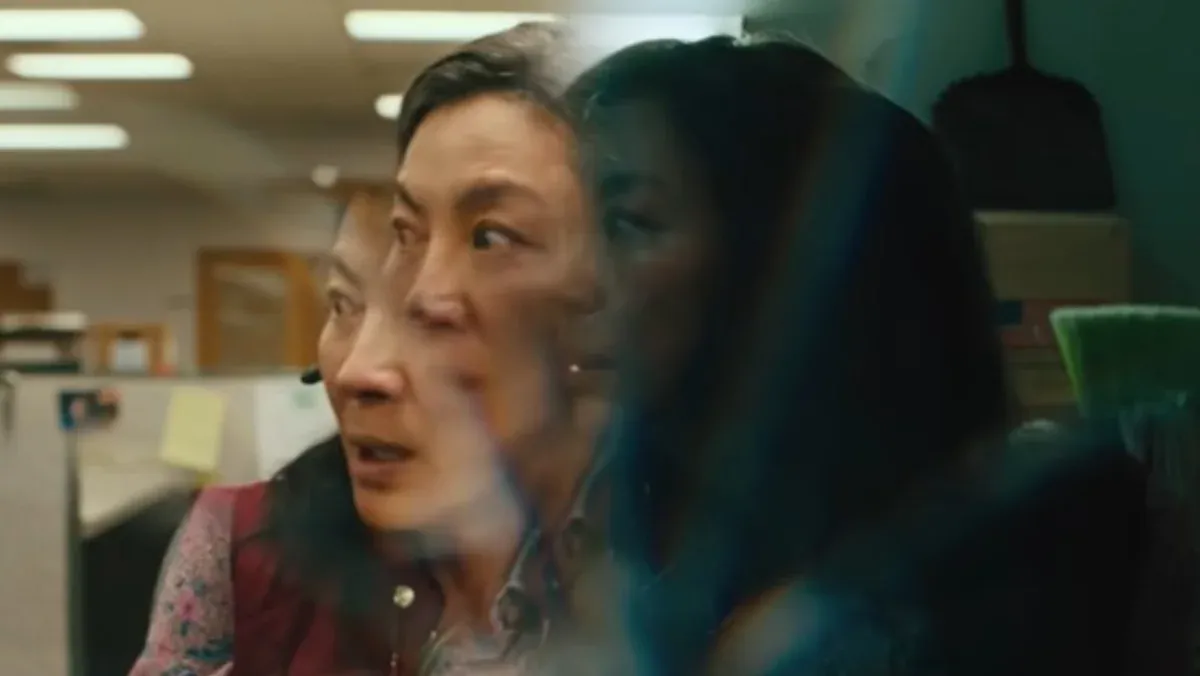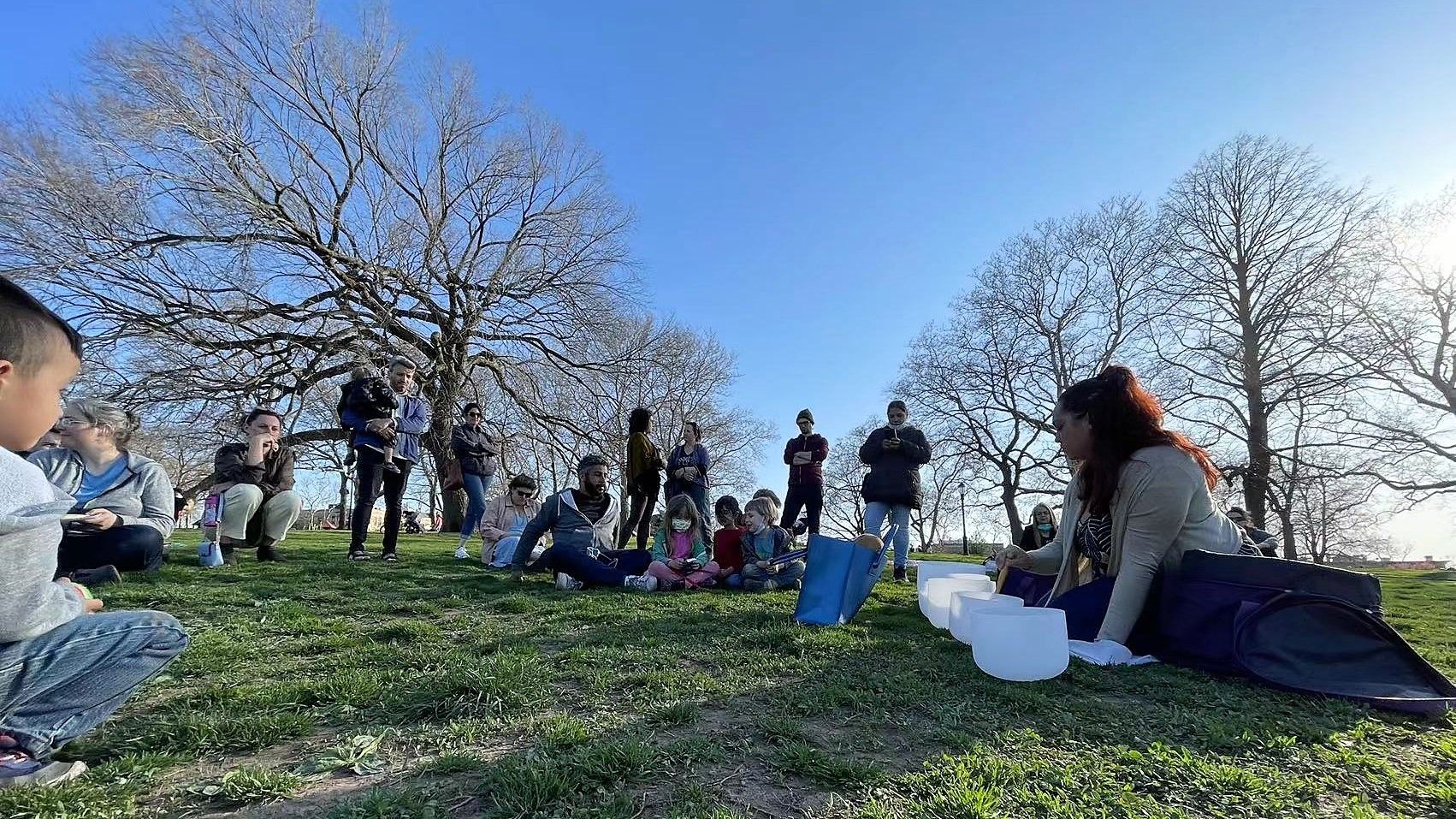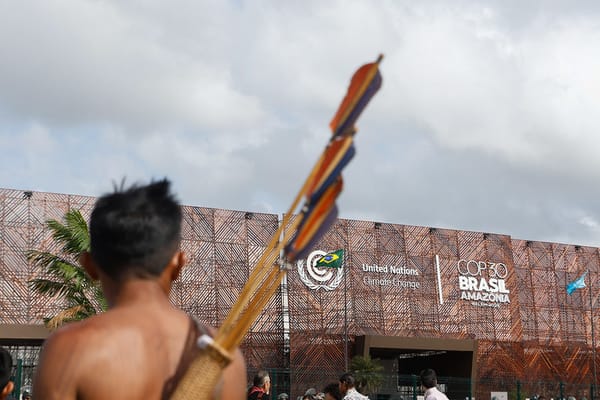04.16 | confronting the need for safety with love instead of fear
Last weekend I watched the new A24 + Michelle Yeoh film "Everything Everywhere All At Once" - one of the first films in years that left me breathless in awe at the end of it.

If we become obsessed with the idea of death hiding and waiting for us in ambush, we are not making death more real but life less real. Our life is divided against itself. It becomes a tug of war between the love and the fear of itself. Death then operates in the midst of life, not as the end of life, but rather, as the fear of life.
– Thomas Merton
✉️ letter #34
Last weekend I watched the new A24 + Michelle Yeoh film "Everything Everywhere All At Once" - one of the first films in years that left me breathless in awe at the end of it.
It's amazing to see a work of art that stretches so far creatively and conceptually, that has actors (even the less famous ones) so wonderfully inhabiting their roles, that manages to be slightly terrifying, very funny, but also ultimately incredibly heartfelt and earnest without devolving into schmaltz.
The general concept is: a Chinese immigrant laundrymat owner is in the midst of being mired in a tax audit when she's pulled into a world that's actually multiple worlds - all the possibilities that her life could be at that one moment if circumstances around her had shifted or different personal choices had been made.
Another multiversal being is seeking her and killing her across these multiverses.
It sounds very sci-fi fantastical, and it is. But at it's heart it is actually a story that's much simpler and deeper at the same time - when we're confronted with endless hurt, when the people who hurt us are those closest to us, do we choose nihilism or do we choose to move forward with the generosity of hope for change?
It's a question I've been especially drawn to as of late, both with the recent murders of Michelle Go and Christina Yuna Lee, along with the general amount of violent incidents that I've been adjacent to since coming back to New York City. The subway shooter at my subway stop earlier this week was icing on the cake.
There's been a lot of wonderful folk who've responded to these incidents by giving free self defense lessons and offering pepper spray or tasers. I do appreciate them for trying to give me the feeling of safety through personal defensive action, but ultimately have always said no to these options myself.
While I often fantasize about being able to pull off some killer move (leg sweep! judo throw!) when a violent attack comes, I'm not convinced it will actually play out in my favor. I've mostly shrugged off offers by joking that clumsy bitch I am, I'm more likely to hurt myself in an emergency than my assailant.
Jokes aside though, how will self defense training help when you're with friends on a subway platform, and someone just runs by and pushes you into the tracks? If I didn't notice that someone had slipped into my apartment door behind me, would I be able to reach for a taser fast enough before I was stabbed? Would either a karate chop or a big zapper do anything if someone throws a smoke bomb into my train and starts shooting at me?
But also, I feel like taking those avenues are less empowering than they look. When you agree that the only way to be safe is if you put weapons into your own hands, you've tacitly decided to walk a path of fear and suspicion. You've created a wall where now everyone can possibly be the enemy, and it's their job to prove to you that they're not.
I find it deeply paralyzing to consider everyone an enemy.
Sadly, I see this "hey, everyone's the enemy" philosophy in calls for "more safety" through more policing and jailing. This, after years of work by activists to reduce the amount of incarcerated people in New York.
I want to remind everyone that despite a 40% decline in jail populations during COVID, the rate of violent crime in New York City is still below the national rate. This is not how people read the stats in sensationalist headlines in publications like the New York Times. I mean look at this:

Now with these high profile crimes, the incredibly well funded policy lobby (there is more than $10 billion planned for annual spending upcoming) has been calling for even more of itself. Mayor Eric Adams' "anti-violence public safety plan," a walk back from his agreement to work with police reform coalitions, will no doubt rachet up more supporters.
But really, how do the police help when it's obviously incredibly mentally ill people, often folk who were already suffering pre-COVID and then went through two years of an experience that mentally injured everyone, who are the ones we're seeing consistently behaving like criminals.

I spent Friday afternoon in Sunset Park with community members laughing at how inept the police response to the Brooklyn subway shooter has been (we could laugh, because thankfully no one was killed). The security cameras in the subway weren't working and the police presence that was there when the shooting happened didn't have working radios.
There were hundreds of first responders at the two stations. I don't know what they were doing there, besides standing around looking serious, but for all the army they had "scouring the area," they didn't find him.
The perp actually called himself in, tipping off the police to his exact location, but he left when hours later nobody bothered to pick him up. It's only after another bystander located him that he finally "got caught." Eric Adams praised the law enforcement agencies for their help. It's a giant joke.
I'd be remiss to not mention that Adams is moving forward, despite vehement community protest, to build the world's tallest jail in Chinatown. Construction on this structure, which costs $8.3 billion, is projected to last until at least 2027.
On Wednesday morning, protestors were arrested as they tried to block fencing for the demolition of the current structure on site.

This is $8.3 billion (part of a five year budget for the criminal justice system which could exceed $50 billion) that could be spent on actual housing, on mental health first responders, on training and giving resources to existing social work systems that aren't just the police, on anything and everything that sees people as people.
I won't even get into how every part of this prison industrial complex is going to be placed in predominantly non-white communities.
I think, if we're going to take up defense classes, it should be fight to make things better for everyone. To heal trauma rather than to cause more of it.
And a first action for that is to treat others - even others who can or have hurt you - as folks to show kindness to instead of suspicion. To embrace with that generosity of hope for change.
🌱 the ethical ideas newsreel
- This op-ed for Prism is a good running list of how the NYPD, and the general carceral industry of New York, has failed Asian Americans in the past. Something to talk to your conservative relatives about.
- Here are the best 12 ways to get cars out of cities, ranked by The Conversation.
- Finding heroes in a messy digital world: a computers & informatics professor talks on how "thinking differently about how to design the digital platforms that structure our lives can help lead us on a journey to improve society and become better versions of ourselves."
- I'm mostly suspicious of any corporation that purports to switch to an environmental tact, but I did enjoy this profile of Niren Chaudhary, CEO of Panera Bread, who has been pushing the chain outlet to put sustainability at the center of its operations.
🎵 song of my week
If I were to be honest, I'd have to admit that the song I've had on repeat most often is Harry Styles' As You Were. I was never a fan in the One Direction era, yet I am living for Harry as androgynous art school style icon. But I already featured him two weeks ago.
So here's something that, for whatever reason, feels like it has a similar vibe - perhaps much more lo-fi and atmospheric, but also somehow both retro and modern at the same time.
I heard it on NPR's All Songs Considered, and they've already written up something lovely about it, so I'm just going to copy paste that here:
It's so easy to get lost in Luna Li's music. The rising artist's latest single, a collaboration with beabadoobee, whispers like a confession, but also soars. It's gloomy, dreamy and dizzying, punctuated by addictive electric guitar solos, and emblematic of the Korean-Canadian artist's sound.
It also has a similarly addictively watcheable music video.
✨enjoying: one final piece of pop culture fun
Let's keep talking about movies, especially once addressing intergenerational trauma! I do find it kind of funny that Disney movies have shifted so far into the Villain of each film being less "random dude who wants to kill you" and more "all the issues your family refuses to talk about."
Like, somewhere around Frozen, the dysfunctional family started to be a bigger issue than the actual villain. Hans is definitely a bad guy who gets his comeuppance, but he didn't plan anything. The whole main conflict is born of Elsa's repression of her self, due to the way her parents handled how she accidentally hurt her sister with her powers.

There was a brief foray into there not being a villain at all with Inside Out spending the entire time inside a little girl's head, and with Moana mostly solving a problem her demi-god friend Maui created - but the families in those movies were just NPCs. Both Joy/Sadness and Moana are kickstarting their own journeys in environments that are close-knit and supportive and otherwise not explored very much.
We swung back to family causing most of the conflict with Coco - for most of the movie, our protagonist Miguel is fighting his family's suppression of his music... and then there's a surprise twist villain at the end. But to be honest, the surprise twist villain at the end kind of felt to me like a cop out.
It doesn't feel realistic to me to force generations to hate something as culturally important as music and then do a 180 when you realize the reason you hated it all along was based on a misunderstanding of a situation.
But the story is ultimately centered on Miguel and Héctor. Héctor's wife, who kicks off a family tradition of avoiding musicians, doesn't get much of an emotional arc herself beyond being all "oops, sbt, ilu."

Now with both Encanto and Turning Red, there's no longer that cop out. The family is The Problem. But the family is still people who you love and care about, and who deeply if problematically care about you. And it's up to the kids to confront that, explore the history of hurt, lay it out in the open, and build a path forward.

I guess it shows that a lot of Millennials did in fact go to therapy. Now that it's mostly Millennials in charge of writing & making movies, it's all there in the plots.
I think what struck me as particularly stunning about Everything Everywhere All At Once though was, for once, it was the mother confronting the problem, working through it, and realizing how to move forward herself. The parent actually parented.
To me, a Millennial who often gets very tired working as the emotional support animal of the family, it was like some form of wish fulfillment.
Haha okay, so I guess this section has turned into another plea to watch Everything Everywhere All At Once. Look, it was fantastic, okay?
Did you Enjoy It?
Stalk me on Social Media




